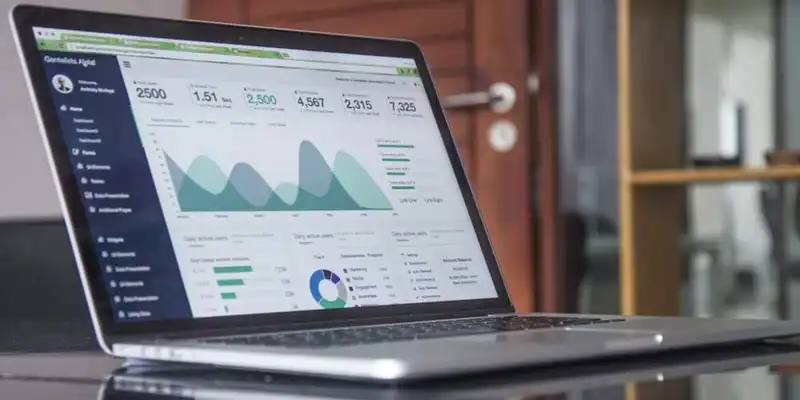What is Business Intelligence Reporting - A Complete Overview
When reviewing data analysis and reporting, it's evident that big data plays a crucial role in presenting business performance and success. However, because said data can be so ambiguously interpreted especially for new business owners the necessity for a business intelligence reporting becomes essential.
Business Intelligence, or BI, helps reduce the uncertainty around deciphering business data and facilitates thorough analyses to pave the way for making more informed business decisions.
With a purpose to deliver comprehensible data and provide actionable insights, it is recommended to incorporate BI reporting solutions into any business plan, regardless of industry. In order to gain a full grasp of its capabilities, here's a complete overview of business intelligence reporting.
What BI Reporting Is and How it Works
With business intelligence reporting, you get to make sense of incoming and past data to derive meaningful conclusions about what your future course of action should be.
Business intelligence reporting tools accumulate this data and run an analysis to identify trends in the market. Next, this information is sorted into pie charts, histograms, or tables to generate visual forecasting models in order to get a better understanding of what all of the information on the table actually means in regards to the business.
Such advanced reporting solutions give end-users the ability to make quick and beneficial decisions.
BI reporting can be broken down into two categories
- Managed Reporting When tech professionals decipher and present data collection to clients who are typically less proficient on the technical end. This form of reporting is typically exhibited by enterprises.
- Ad-Hoc Reporting When non-tech professionals independently review data collection past and present to create business reports. Small or new companies would typically execute this strategy.
Why Businesses Utilize Business Intelligence
These reports allow business users to comprehend data trends over a particular period of time using charts and tables to discover the connections between variables.
IT executives, managers, operational workers, and other front line and back-office staff use the reports to make well-informed decisions as they are now empowered to identify new opportunities to reduce costs and stop inefficient practices.
Of course, BI doesn't just take into account historical data of a business, but it can also factor in industry-wide info, competitor benchmarks, performance-related data, and a lot more. And with the right BI reports, it's possible to propel businesses to greater efficiencies and smoother operations, all thanks to preemptive strategies that wouldn't be possible without business intelligence.
The Goal

Here's a simple fact- Data analysts and IT developers shouldn't be solely responsible for finding and following potentially profitable data trends for businesses. All decision-makers across an organization should have access to tools that can help them make business intelligence reports.
Therefore, one goal of BI reporting is to ensure that leaders can decipher the report, draw conclusions, and make timely decisions independently.
The other goal is data organization and eliminating data silos, so that all relevant and accurate information can be garnered from one central source. When people within an organization have access to the same data sets, its easier to get dependably accurate results the final report is more reliable and also takes less time to develop.
With the help of BI reporting tools, data can be discovered, explored, and edited in one place.
The Benefits of Business Intelligence and Reporting
Accurate reporting will go a long way in helping businesses prosper by coming up with the right strategies to face all ongoing and upcoming challenges.
Here are some of the many benefits of business intelligence reporting
Uninterrupted and Efficient Workflows
Essential stakeholders sometimes hit a roadblock in their decision making due to lack of clarity, which is when SQL developers or IT departments come forward with detailed reports to clear the air.
Data is accumulated from various sources, and thoroughly analyzed, and findings are then presented to the management. However, this process is slow and inefficient without BI reporting.
With business Intelligence reporting, these interruptions can no longer stop or delay the workflow data is gathered together in a centralized dashboard, and even non-technical users can access it. Thanks to the many innovative BI tools, this process is downright seamless and only takes a few clicks to complete.
Smart intelligence enables reporters to visualize this data into interactive formats that are easier to comprehend as opposed to text-based reports. This bears more significance than you may think.
Because our brains process visual content 60,000 times faster than imageless content, we comprehend the information that is being presented on a more intuitive level.
Industry and Department of Specific Reports

Thanks to business intelligence reporting tools, now accumulated data can be well-placed in specific reports a module can be used for the sales team, a separate one for the marketing department, a third one for the finance department, and so on.
Accordingly, the marketing department uses the marketing report; the sales team gains guidance from the sales report; the finance department knows where costs can be adjusted from the financial statement, balance sheets, and other vital metrics, etc.
Likewise, the HR department can use HR analytics tools to better the recruitment process. The bottom line is that there are multitudes of examples where BI reports can be used to make strategic decisions.
Taking Old and Current Data into Consideration
Artificial intelligence and machine-learning are added to the equation to analyze historical data and report back on what the future may entail by recognizing patterns. It's also possible to set data alerts to stay up-to-date with real-time changes.
The identification of this real-time change can be challenging in standard Word and Excel reports, as these software may not be of much help in reporting.
But with bespoke BI reporting tools with real-time alerts in place, business owners and managers can be informed of any irregularities, so they can take on action to rectify the problem in time. Overall efficiency is increased, and costs are reduced thanks to these timely decisions.
Predicting Customer Behavior

All decisions and workflows focus on one motive serving end-users and guaranteeing their satisfaction matters the most to a business's survival.
This is important because customers now have a wealth of options at their fingertips, and they exercise the choice to only buy from brands that resonate with them. Businesses must now focus on appealing to their emotional side, while also excelling at customer service.
Business intelligence reporting tools make it possible to acquire correct customer data; accordingly, companies can formulate strategies that can attract customers on a deeper level.
Technology has paved the way for customers to communicate with businesses; there are endless possibilities, some of which include social media, chatbots, emails, etc. Data is gathered from these and other interactive sources. Then it is used to assess the overall needs of the prospect and set the premise for quality services.
Optimized Operations and Future Projections
Businesses have KPIs, or key performance indicators, which work as benchmarks to assess if business strategies are successful or not.
Business intelligence and reporting tools can track these KPIs in real-time, and then artificial intelligence and various analytical tools are used to make future predictions. These forecasts help in preplanning and making cost-effective decisions at the right time.
Cost Effective
When running a business, expenses can populate fast and distort assigned budgets.
The idea is to cut costs and enhance profits. For that, companies have to consider things like return on investments, incurred expenses, operational costs, and savings.
With holistic business intelligence reports available at the click of a button, it's possible to find information to make budgetary decisions easier. This makes cost optimization faster and more accurate for businesses.
So, for example, if demand is lower than the inventory available, BI reporting business owners can know that and accordingly adjust purchases to cut costs.
Well-Informed Decision Making
Top executives have a lot riding on them, and they need to formulate exceptional strategies to ensure the wellbeing of the staff as well as the overall organization. They cannot afford to make wrong judgments as it can cost businesses in terms of time and money.
The good news is that now gaining perspective is much more straightforward with business intelligence reporting tools in place. A centralized dashboard with essential data can help them pinpoint strengths, weaknesses, opportunities, threats, and trends.
Whether the end goal is to improve workflows, reduce costs, design a campaign, etc. BI reporting gives them the right data sets to make more potent decisions and set benchmarks.
Streamlined Procurement Processes

Businesses that deal with the purchase and sale of goods have procurement departments that arrange purchases.
To be efficient and profitable, the procurement must be on-point they should have safety stock, insights into stock requirements (due to seasonal fluctuations, etc.), and capital to make the purchases and other data readily available.
Thanks to business intelligence reporting, all meaningful data is represented in visualizations based on the primary functions of the procurement department.
By looking at some of the key performance indicators like the number of suppliers, compliance rate, and supply chain cycle strategies can be formulated to focus on cutting costs, improving relationships with suppliers, and refining the procurement cycle.
Heightened Data Quality
Analyzing big data before the advent of BI reporting used to be beyond stressful, but now it's possible to get the maximum value out of given numbers.
New data comes from a variety of sources and gets added to current findings, which help put things in perspective by analyzing and converting this gathered data into meaningful information.
Everything is available on one central dashboard, and those authorized can access this data around the clock from mobile phones, tablets, laptops, etc. They can see trends and essential metrics to gain insights and make better decisions.
With all the charts and visual aids available and the access to a variety of data sets and information, getting the point across is quite easy with BI reports report makers can even narrate the findings in the form of a story. In other words, BI reporting makes way for data storytelling.
Setting Performance Management Benchmarks
Managing talent in an organization is not an easy task; it takes a lot to motivate employees, enhance their performance, and keep them engaged and happy with what they do.
With business intelligence reporting, all key performance indicators and other relevant metrics are made available to infer if there is a trend in productivity. Accordingly, collective performance and individual performance can be pointed out.
This helps in seeing gaps and opportunities on how to point employees in the right direction and make them perform at their full potential. Offering tailored support and growth prospects, showing that you care, and offering incentives will help you increase motivation exponentially.
Some of the many vital metrics that signal current and potential performance are productivity, attendance, acquired overtime hours, and training costs.
BI Reporting Best Practices

All in all, business intelligence reporting is done right only when it's specific to your organization's data needs. Still, some noted best practices ensure that the resulting reports are high quality, accurate and fulfill all your requirements. Keep these in mind while developing your BI reporting processes
- Add relevant metrics to report and avoid clutter. Sit with your decision-makers, get to know what matters to them, and create reports with only the data that fulfills their needs.
- Prepare your BI reports with the final analysis in mind, ensuring that it's easily used and understood by its intended audience.
- Work with your IT department to set up permissions. This way, you can be sure that your data won't fall into the wrong hands and that only authorized personnel access it.
- Consider creating and publishing reports to the cloud where they can be accessed remotely and don't utilize resources on the central server.
- Bring in data from various sources by putting reporting layers on top of the data will be delivered to the dashboard quickly.
- Quickly adapt to advances in technology, updating your software, and reporting processes according to your business needs.
In conclusion, there is no denying the fact that your organization can experience massive change with the right business intelligence and reporting tools. Get in touch with us to learn more about establishing a dominant data culture at your organization and see what it can achieve for you.









